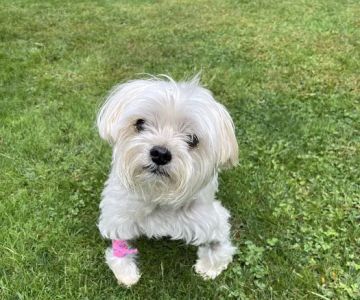Veterinary Orthodontics: Enhancing Pet Health with Braces and Dental Care
- 1 - Why Veterinary Orthodontics Is Important for Pets
- 2 - Common Dental Issues in Pets
- 3 - How Veterinary Orthodontics Can Help Your Pet
- 4 - Choosing the Right Veterinary Orthodontist
1. Why Veterinary Orthodontics Is Important for Pets
Veterinary orthodontics is a specialized area of dental care focused on correcting issues with pets' teeth and jaws. Just like humans, pets can suffer from dental problems, such as misaligned teeth, underbites, overbites, or crowded teeth, which can lead to discomfort, difficulty eating, and even more severe health issues over time. Veterinary orthodontics aims to address these problems, improving both the function and aesthetics of your pet’s teeth.
Maintaining good dental health in pets is essential, as dental issues can affect their overall health, leading to complications such as infections, tooth decay, and even heart disease. Veterinary orthodontics helps prevent these issues by correcting misalignments and ensuring that your pet's teeth function properly.
2. Common Dental Issues in Pets
Just like humans, pets can experience a variety of dental issues, including malocclusions (misalignments of the teeth), periodontal disease, and other orthodontic concerns. Some common dental issues in pets include:
1. Misaligned Teeth
Misaligned teeth can cause difficulty chewing and lead to uneven wear on the teeth. Over time, this can result in more serious dental problems. Veterinary orthodontics helps reposition the teeth using braces or other corrective devices.
2. Overbite and Underbite
In some pets, the upper and lower jaws may not align correctly, leading to an overbite or underbite. These conditions can cause discomfort while eating or chewing and can affect the overall bite function. Veterinary orthodontics can correct these issues to improve your pet's quality of life.
3. Crowded Teeth
Crowded teeth can make it difficult for pets to clean their teeth properly, increasing the risk of dental decay and gum disease. Orthodontic treatments such as braces can help align the teeth and reduce crowding, making it easier to maintain good oral hygiene.
3. How Veterinary Orthodontics Can Help Your Pet
Veterinary orthodontics is an essential tool for improving your pet's dental health. Braces and other orthodontic treatments can address a variety of dental issues, offering several benefits for your pet:
1. Improved Chewing Function
By correcting misalignments or malocclusions, veterinary orthodontics improves your pet’s ability to chew properly. This can reduce the risk of dental damage and make it easier for your pet to eat, especially if they have difficulty chewing harder foods.
2. Reduced Pain and Discomfort
Misaligned teeth or jaws can cause significant discomfort and pain for pets. Veterinary orthodontics can help alleviate this discomfort by realigning the teeth and jaw, improving your pet’s overall comfort level.
3. Preventing Future Dental Issues
By correcting existing dental issues early on, veterinary orthodontics can prevent more severe health problems from developing in the future. It reduces the likelihood of tooth decay, gum disease, and other complications related to poor dental alignment.
4. Choosing the Right Veterinary Orthodontist
When seeking orthodontic treatment for your pet, it’s essential to choose a qualified veterinary orthodontist who specializes in dental care for animals. Look for a veterinarian who has advanced training and experience in veterinary orthodontics and is familiar with the latest treatment options.
1. Check Qualifications and Experience
Ensure that the veterinary orthodontist has specialized training and certification in animal dentistry and orthodontics. Ask for references or check reviews from other pet owners who have had similar treatments done.
2. Consultations and Diagnosis
During a consultation, the veterinary orthodontist should perform a thorough examination of your pet’s teeth and jaw. They may recommend X-rays to assess the alignment and identify any underlying issues that need to be addressed with orthodontic treatment.
3. Treatment Options and Cost
It’s essential to discuss treatment options and the associated costs with the orthodontist. Some pets may require braces or other corrective devices, while others may benefit from simpler treatments. Make sure to ask about the expected timeline for treatment and any follow-up care that may be needed.
In conclusion, veterinary orthodontics plays a crucial role in maintaining your pet’s dental health and overall well-being. By addressing issues like misaligned teeth, overbites, and crowded teeth, veterinary orthodontics can significantly improve your pet's quality of life. If you think your pet may benefit from orthodontic treatment, consult with a qualified veterinary orthodontist to explore the best options for your furry friend’s dental health.











